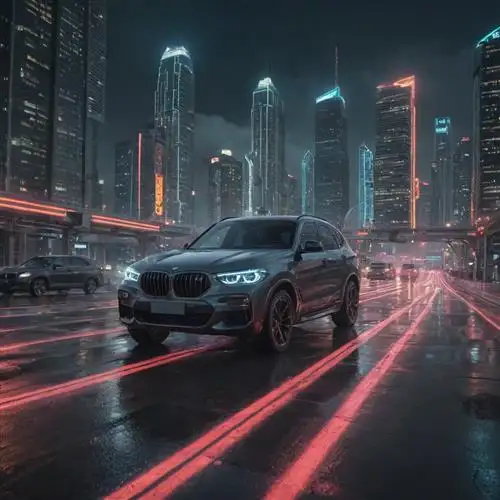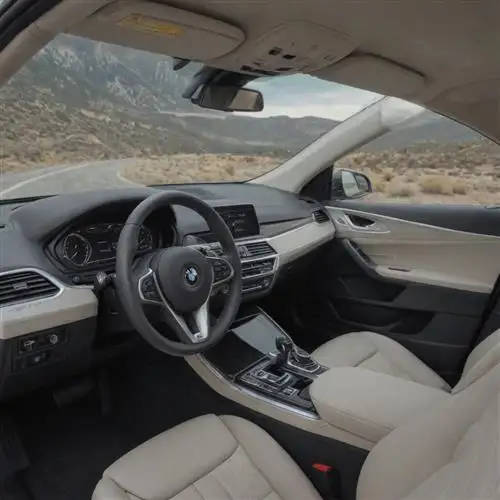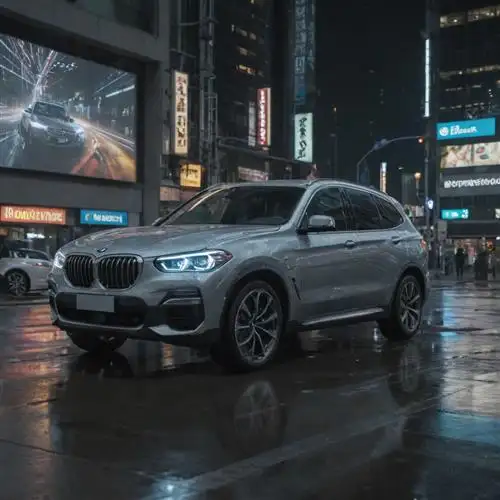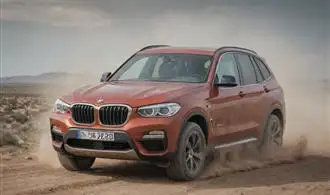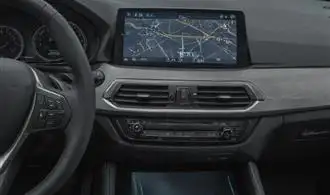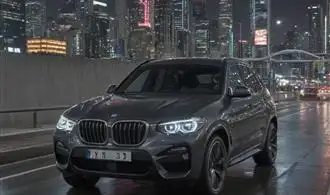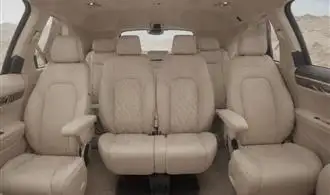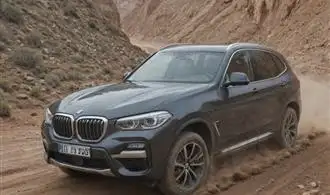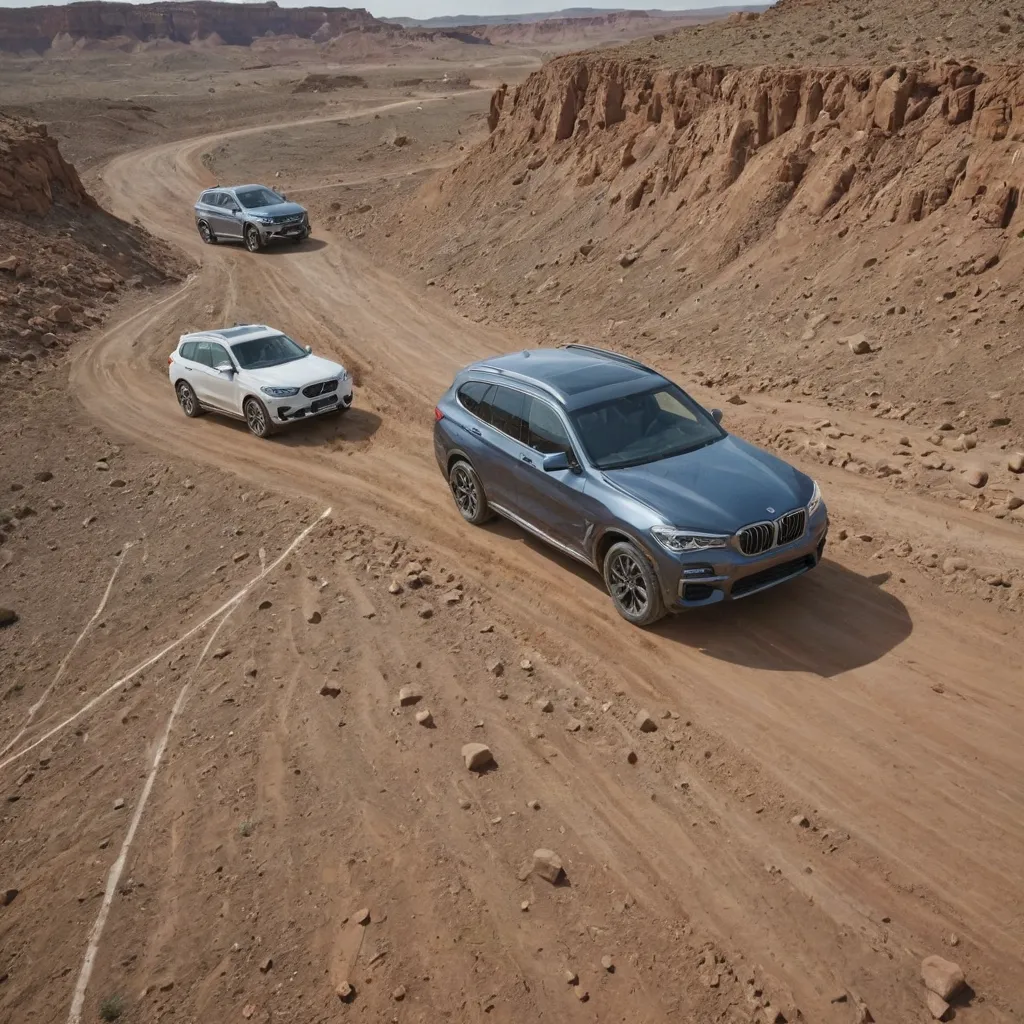
Exterior Design Comparison
The exterior design of the BMW X3 and Acura RDX presents a stark contrast, showcasing the distinct design philosophies of these two premium SUVs. The BMW X3 exudes a bold and muscular presence, with its signature kidney grille, angular headlights, and sculpted hood creating a striking and dynamic appearance. The RDX, on the other hand, adopts a more refined and elegant aesthetic, with a sleeker silhouette and a more subdued front fascia. While the X3 appeals to those seeking a sporty and aggressive look, the RDX caters to those who prefer a more sophisticated and understated style.
One of the standout features of the BMW X3's exterior is its well-defined character lines, which run along the sides of the vehicle, creating a sense of movement and dynamism. This design language is further accentuated by the vehicle's pronounced wheel arches, giving it a planted and confident stance. In contrast, the Acura RDX's exterior design is characterized by its smooth and flowing lines, which contribute to a more elegant and refined appearance. The RDX's front grille, while less pronounced than the X3's, still manages to convey a sense of sophistication and premium quality.
When it comes to the dimensions, the BMW X3 and Acura RDX share some similarities, with both offering a spacious and accommodating interior. However, the X3 stands out with its slightly larger overall size, which translates into a more generous cargo capacity and a more commanding presence on the road. This can be particularly appealing for those who prioritize utility and versatility in their SUV.
Regarding the lighting systems, the BMW X3 boasts a distinctive LED headlight and taillight design, which not only enhances the vehicle's visual appeal but also provides excellent illumination and improved safety. The Acura RDX, too, features a well-designed lighting setup, though it may not have the same level of visual impact as the X3's.
One area where the Acura RDX excels is its overall attention to detail and fit and finish. The RDX's body panels are seamlessly integrated, and the overall craftsmanship is evident in the smooth and consistent panel gaps. This attention to detail contributes to a more premium and refined feel, which may be appealing to some buyers. In contrast, the BMW X3 maintains a more rugged and sporty aesthetic, with a slightly more pronounced focus on performance-oriented design elements.
Ultimately, the exterior design of the BMW X3 and Acura RDX reflects the unique priorities and target audiences of these two premium SUVs. The X3's bold and muscular styling appeals to those seeking a more dynamic and sporty driving experience, while the RDX's elegant and refined design caters to those who prioritize a more sophisticated and premium aesthetic. Prospective buyers must consider their personal preferences and the role the SUV will play in their lifestyle when evaluating the exterior design of these two formidable competitors.
Interior Amenities and Comfort
When it comes to interior amenities and comfort, the BMW X3 and Acura RDX offer a range of features that cater to different preferences. The X3 boasts a luxurious cabin with high-quality materials and a sleek, modern design. The dashboard is neatly organized, with intuitive controls and a large, high-resolution display. The seats are supportive and offer ample adjustability, ensuring a comfortable driving position for both the driver and passengers. The X3 also comes equipped with a variety of premium features, such as dual-zone climate control, heated and ventilated front seats, and a panoramic sunroof, creating a refined and relaxing driving experience.
In contrast, the Acura RDX also delivers a well-appointed interior with its own unique charm. The cabin features a spacious and airy feel, with generous legroom and headroom for all occupants. The seats are comfortable and offer good support, though they may not feel as luxurious as those found in the X3. The RDX's infotainment system is user-friendly and offers a range of connectivity options, including Apple CarPlay and Android Auto integration. Additionally, the RDX boasts a wealth of convenience features, such as a power liftgate, a hands-free access system, and a surround-view camera system, which can be particularly useful in everyday driving scenarios.
When it comes to cargo space, both the X3 and RDX provide ample room for your belongings. The X3 offers a spacious cargo area with 28.7 cubic feet of space behind the rear seats, which can be expanded to 62.7 cubic feet with the seats folded down. The RDX, on the other hand, provides 29.5 cubic feet of cargo space behind the rear seats, which can be increased to 58.9 cubic feet with the seats folded. The difference in cargo capacity is relatively small, and both vehicles can easily accommodate large items or multiple pieces of luggage.
In terms of noise and vibration, the X3 and RDX offer a refined and composed ride quality. The X3 is known for its smooth and quiet cabin, with minimal road and wind noise. The RDX also provides a serene and well-insulated interior, though it may not be quite as whisper-quiet as the X3. Both vehicles are well-suited for long drives, ensuring a comfortable and relaxing experience for both the driver and passengers.
Performance and Driving Dynamics
The BMW X3 is renowned for its impressive performance and dynamic driving characteristics. Powered by a range of turbocharged engines, the X3 delivers a thrilling and responsive driving experience that sets it apart from its competitors. The base model X3 sDrive30i is equipped with a 2.0-liter turbocharged four-cylinder engine, producing 248 horsepower and 258 lb-ft of torque. The engine is mated to an eight-speed automatic transmission, which provides smooth and seamless gear changes, enhancing the overall driving experience.
The available all-wheel-drive system, known as xDrive, further enhances the X3's performance and handling capabilities. The system continuously monitors road conditions and distributes power between the front and rear wheels, providing optimal traction and stability in a variety of driving situations. This seamless integration of the powertrain and all-wheel-drive system results in a nimble and responsive SUV that can tackle winding roads with confidence.
For those seeking even more power, the X3 M40i model is equipped with a 3.0-liter turbocharged inline-six-cylinder engine, generating an impressive 382 horsepower and 369 lb-ft of torque. This potent engine, combined with the performance-tuned suspension and brakes, transforms the X3 into a true driver's SUV, capable of delivering thrilling acceleration and precise handling.
The X3's driving dynamics are further enhanced by its sophisticated suspension system, which features a double-wishbone setup in the front and a multi-link design in the rear. This suspension configuration, combined with the available adaptive dampers, provides a well-balanced ride quality that is both comfortable and responsive. The steering is also remarkably precise, with a well-weighted feel that instills confidence in the driver, whether navigating city streets or tackling winding mountain roads.
Technology and Connectivity Features
When it comes to the technology and connectivity features, the BMW X3 and Acura RDX offer a compelling comparison. The BMW X3 boasts a cutting-edge iDrive infotainment system, featuring a large, high-resolution touchscreen display that is both intuitive and responsive. This system seamlessly integrates with your smartphone, allowing for easy access to your favorite apps, music, and navigation. The X3 also offers wireless Apple CarPlay and Android Auto, eliminating the need for cumbersome cables.
The Acura RDX, on the other hand, features a similar suite of technology, including a touchscreen interface and smartphone integration. However, the X3's iDrive system has a slight edge in terms of its customization options and overall user-friendliness. The X3 also offers a more comprehensive suite of advanced driver-assistance features, such as adaptive cruise control, lane-keeping assist, and automatic emergency braking.
One standout feature of the BMW X3 is its integration with the BMW Connected app. This app allows you to remotely access your vehicle's status, lock and unlock the doors, and even start the engine from your smartphone. This level of connectivity is particularly useful for those who value the ability to stay connected to their vehicle, even when they're away from it.
In terms of audio and entertainment, the BMW X3 offers a range of options, including a premium Harman Kardon sound system that delivers an immersive listening experience. The Acura RDX also features a high-quality audio system, but the X3's system is generally regarded as the more impressive of the two.
Safety and Driver Assistance Systems
Safety and Driver Assistance Systems are critical considerations when comparing the BMW X3 and the Acura RDX. Both vehicles offer a suite of advanced safety features, but there are some key differences worth noting.
The BMW X3 comes equipped with a robust set of driver assistance technologies, including Frontal Collision Warning with City Collision Mitigation, Lane Departure Warning, and Active Blind Spot Detection. These systems work together to provide an extra layer of protection, alerting the driver to potential hazards and even taking corrective action in certain situations. The X3 also offers optional features like Adaptive Cruise Control with Stop and Go, which can maintain a safe following distance and bring the vehicle to a complete stop in traffic.
In contrast, the Acura RDX offers a similar suite of safety features, including Collision Mitigation Braking System, Lane Keeping Assist, and Adaptive Cruise Control. However, the implementation and capabilities of these systems may vary slightly between the two models. For example, the RDX's Adaptive Cruise Control system may not have the same stop-and-go functionality as the one found in the BMW X3.
Both vehicles also feature advanced camera and sensor systems that provide a 360-degree view of the surrounding environment, helping the driver to navigate tight spaces and maneuver with confidence. Additionally, the X3 and RDX offer blind spot monitoring, rear cross-traffic alert, and parking sensors to further enhance safety and convenience.
When it comes to overall safety ratings, the BMW X3 and Acura RDX have both performed well in government and industry crash tests, earning top scores in categories like frontal, side, and rollover protection. This underscores the commitment of both automakers to prioritizing the safety of their customers.

